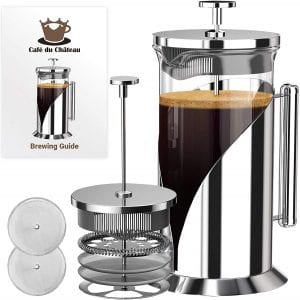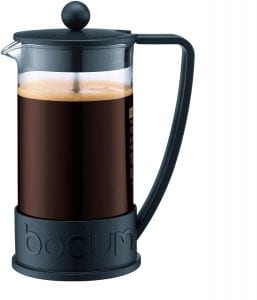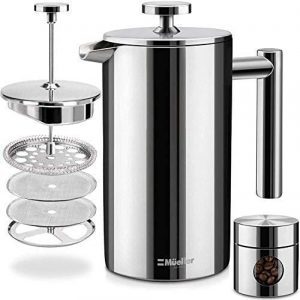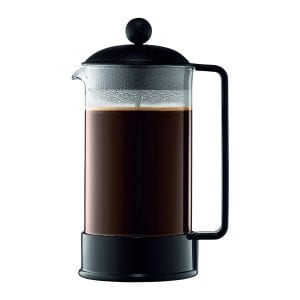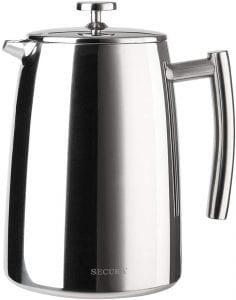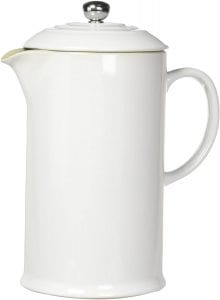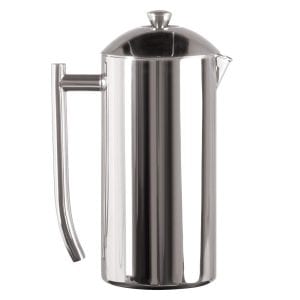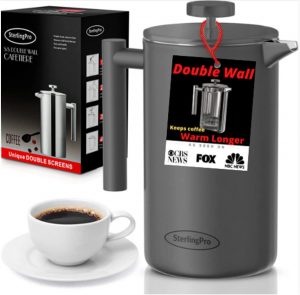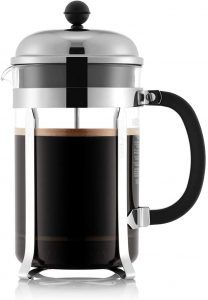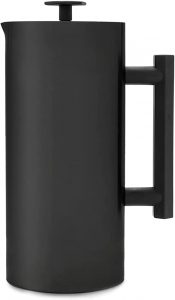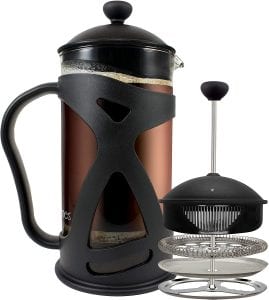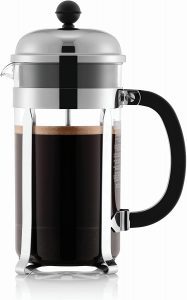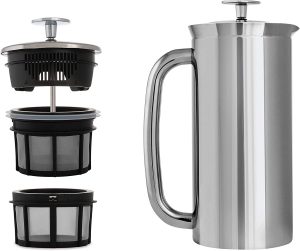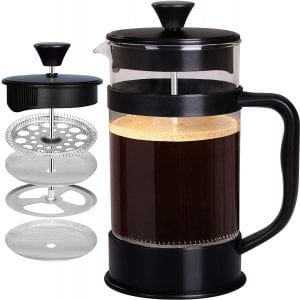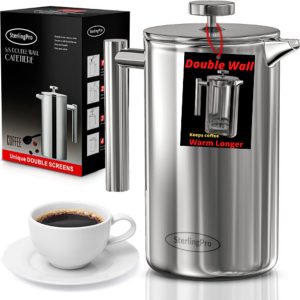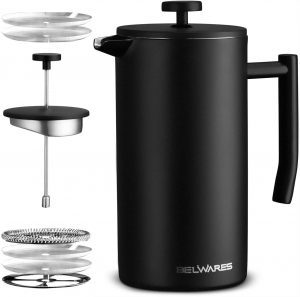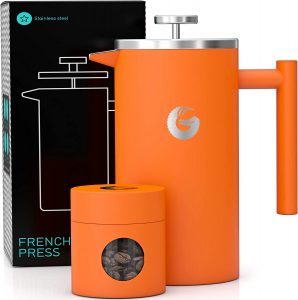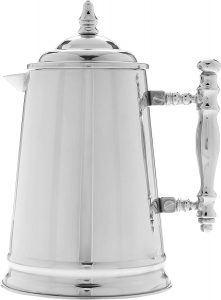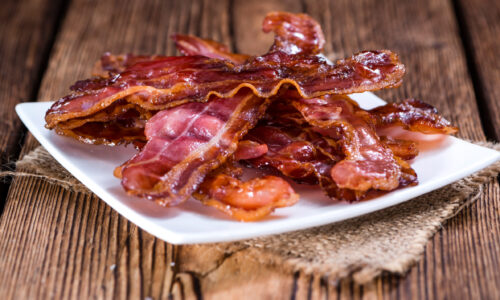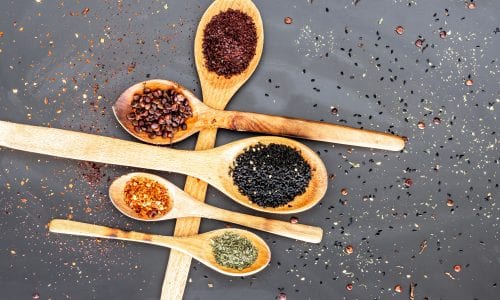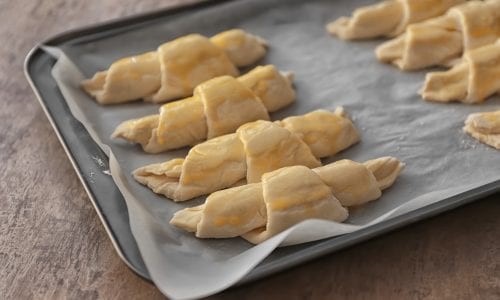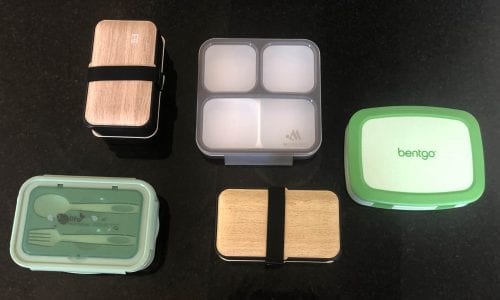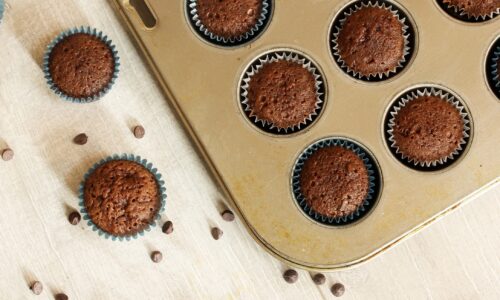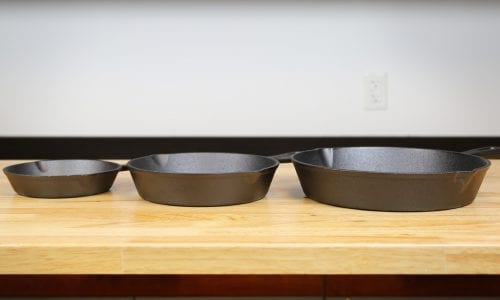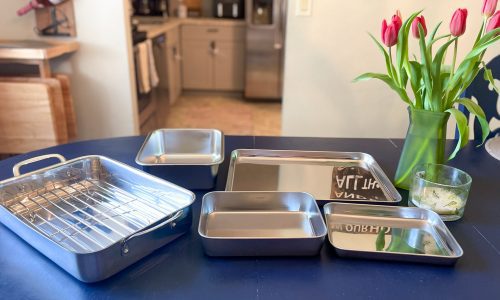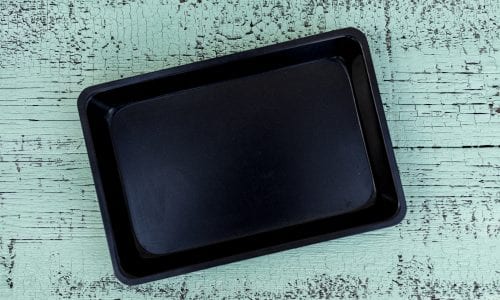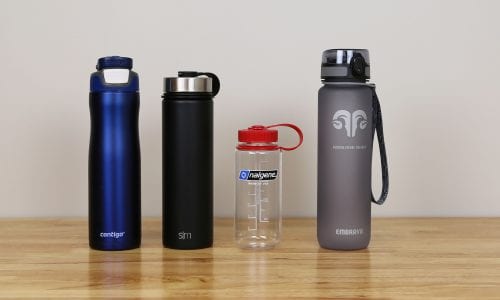The Best French Press
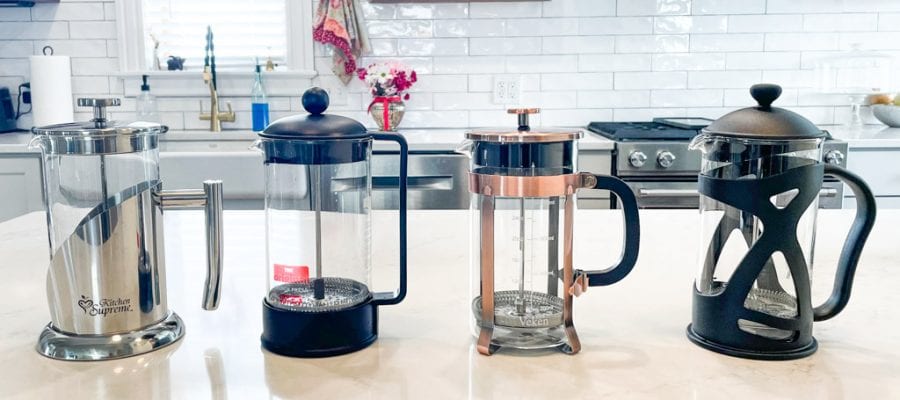
Our Review Process
Don't Waste Your Money is focused on helping you make the best purchasing decision. Our team of experts spends hundreds of hours analyzing, testing, and researching products so you don't have to. Learn more.
Our Picks For The Top French Presses
- 1. Cafe Du Chateau No-Mess Cold Brew French Press, 34-Ounce
- 2. Bodum Brazil French Press, 34-Ounce
- 3. Mueller Austria Professional Grade French Press, 34-Ounce
- 4. Bodum Stainless Steel Filter French Press, 34-Ounce
- 5. Secura 3-Layer Filtering French Press, 50-Ounce
- 6. Le Crueset Stoneware French Press, 27-Ounce
- 7. Frieling Dual Screen Insulated French Press, 36-Ounce
- 8. SterlingPro Cool Touch Easy Use French Press, 59-Ounce
- 9. Bodum Shatter-Proof Borosilicate Glass French Press, 51-Ounce
- 10. Espro Travel Anti-Bitter French Press, 32-Ounce
- 11. KONA Thermal Dishwasher Safe French Press, 34-Ounce
- 12. Bodum Original 3-Part French Press, 34-Ounce
- 13. Espro Sludge Free Micro-Filter French Press, 32-Ounce
- 14. Utopia Kitchen Borosilicate Glass French Press, 32-Ounce
- 15. SterlingPro Large Stainless Steel French Press, 34-Ounce
- 16. Belwares Home Insulated French Press, 50-Ounce
- 17. Coffee Gator Professional Grade French Press, 34-Ounce
- 18. Francois et Mimi Entertaining Vintage Style French Press, 34-Ounce
You'll never have to worry about coffee grinds in your mug when you opt for this French press, as it's designed with a four-level filtration system. Coffee lovers will also appreciate the large 34-ounce capacity and the beautiful stainless steel and borosilicate glass construction.
Most EconomicalWhen shopping on a budget, you'll find this French press is quite affordable.
This model sports a modern look that goes great with minimalist kitchen styles. The glass carafe not only looks great, it lets you see the quality of the brew. Thanks to a well-designed filter, that brew will be rich and flavorful.
Sleek and EfficientExpect a consistent cup from this smart-looking press.
If you're looking for a durable French press, this professional-grade double-layered stainless steel model is your best bet. It's double-insulated to keep your coffee hot longer and strong enough not to break when dropped. It makes for an excellent gift.
Durable PickSince this French press is double-insulated, it is able to keep your hot for 60 minutes longer than traditional models.
You won't have to worry about paper filters or plastic capsules when you opt for this French press. It's crafted from a German heat-resistant borosilicate glass and made using a simple yet elegant design. You can also purchase the press in a 34 or 51-ounce capacity.
Large CapacityCleaning this French press is a breeze, as the unit is dishwasher safe.
Buying Guide
The last decade or so has been a great time for coffee lovers. Barista culture has turned coffee-making from a morning chore into a ritual that incorporates equal parts science and art. Once-esoteric brewing methods like the pour over, cold brew and gravity siphoning are now options at an increasing number of coffee shops, from your local hipster cafe to the corner Starbucks.
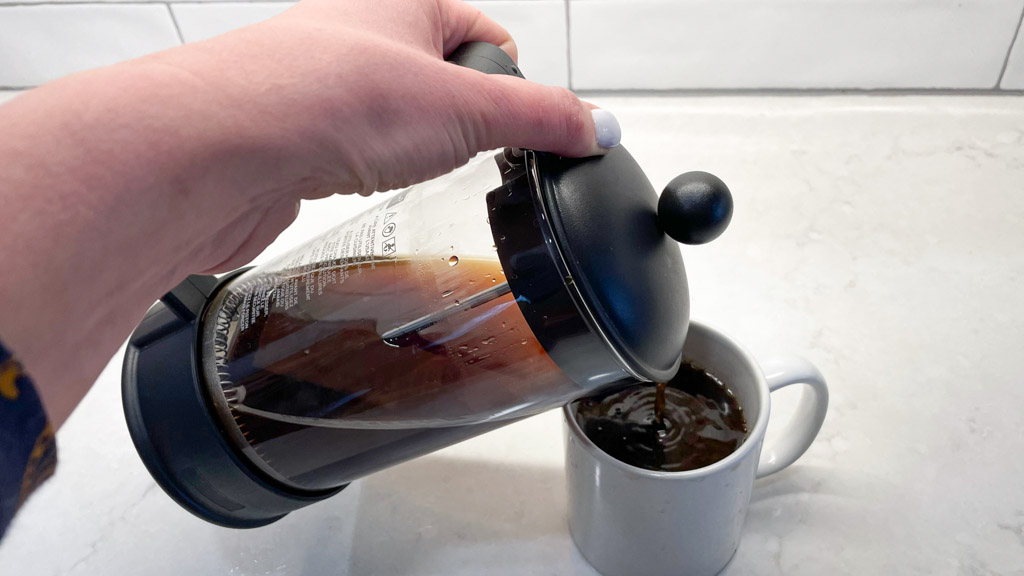
But even the pickiest coffee snob will tell you that for a simple, elegant cup of java at home, nothing beats the good old French press. It’s a method that’s easy to do but infinitely customizable, and it has several advantages over the plain Jane drip coffeemaker or single-serve machine. First of all, there’s no paper filter or plastic pod to dispose of, which makes it eco-friendly. Once you get the hang of making it, you can have a hot cup in your hand quicker than drip coffee. Since there are no mechanical or electrical components to break down, a good French press will keep cranking out java for decades. And best of all, the mesh filter allows more oils from the beans to seep into the final brew. In layman’s terms, that means it just tastes better.
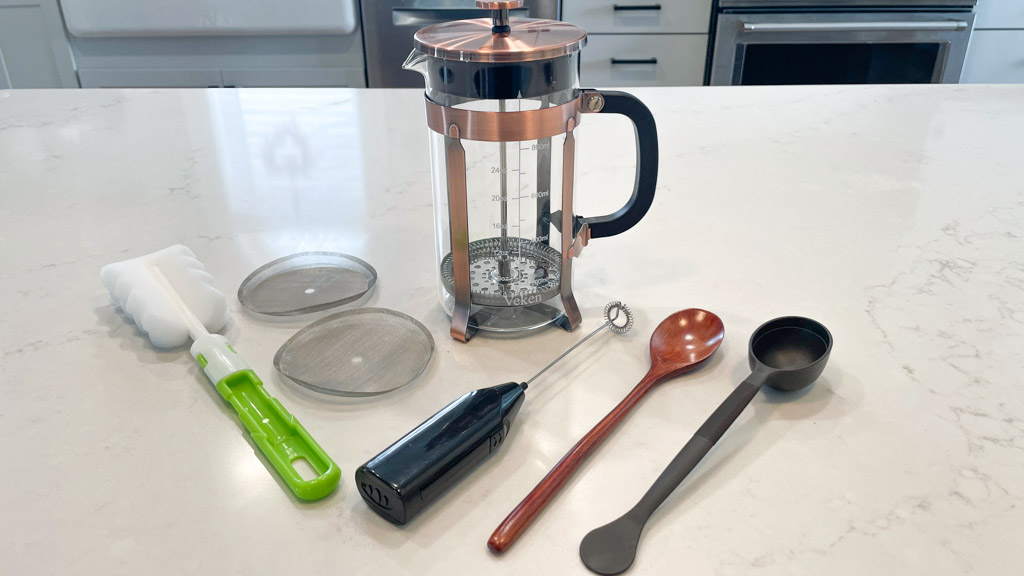
The actual method is simple enough for any first-timer to do. First, heat up your water in a separate pot to just shy of boiling — 200 to 205 degrees or so. While that’s heating up, add a heaping tablespoon of coffee grounds to your French press for every cup of water. If you’re using freshly ground coffee (and you should be), go with a coarser grind. It’s a mesh filter, so fine particles will tend to clog it up or seep into the brew. Next, add your water and stir thoroughly. Wait 3-5 minutes, push the plunger down, and voila! The filter will push the grounds to the bottom, leaving your coffee ready to be poured out of the top.
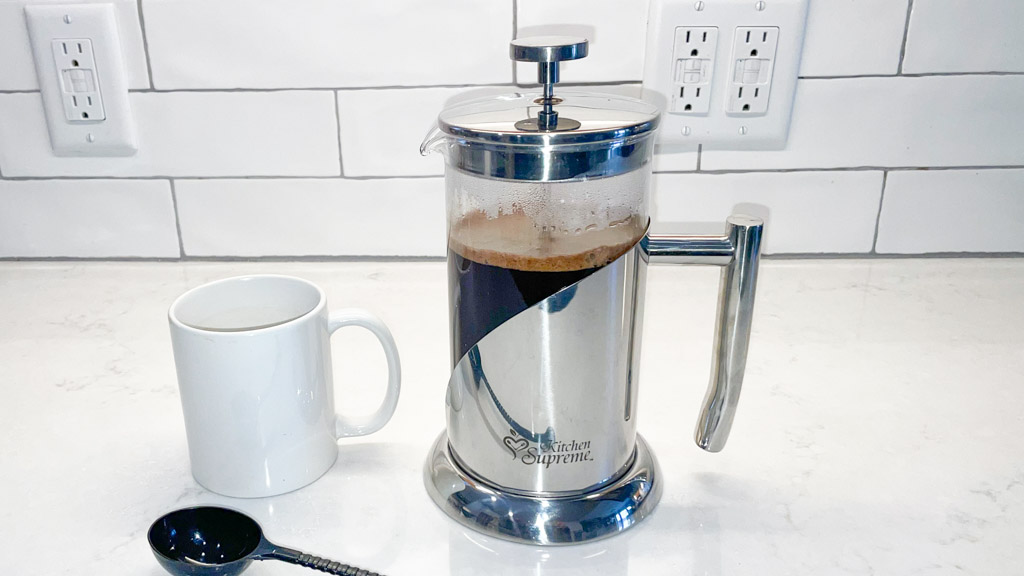
Once you’ve had a few cups, you can feel free to tweak any of the factors above. In fact, finding the recipe for your ideal cup is half the fun of owning a French press. Let’s be clear: The amount and type of beans, coarseness of your grind, water temperature and steeping time will all affect the flavor of your java much more than what type of French press you’re making it with.
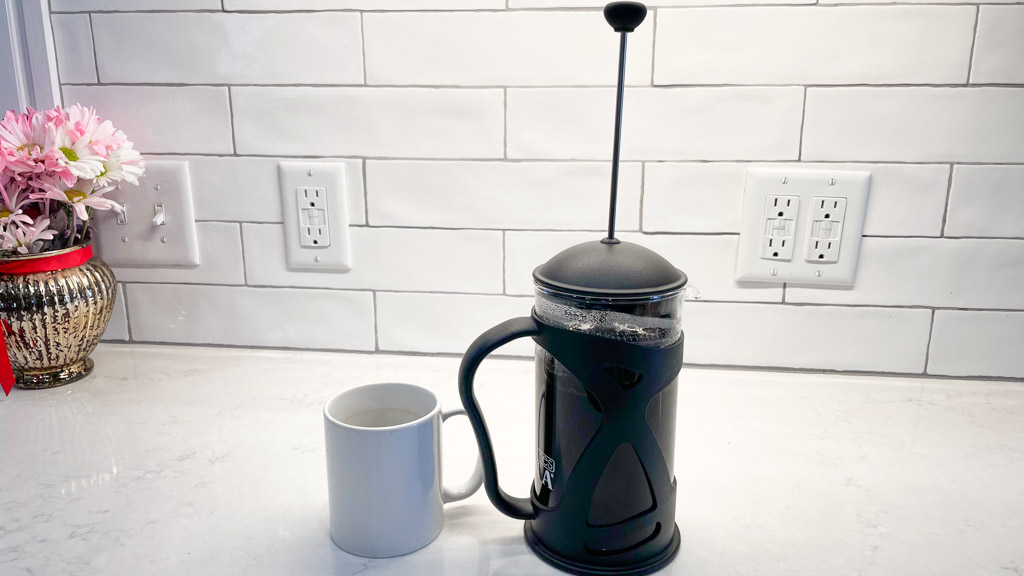
That’s not to say you shouldn’t be choosy about your equipment. This is an item you’ll be using most every morning, after all. Since you’ll be cleaning it after every use, a French press that’s easy to disassemble is key. And while the ability to keep your coffee heated is one advantage that drip makers have over the French press, the materials it’s made with can help mitigate that.
What to Look For
- The material of your French press’ carafe is going to be a major point of preference, and they fall into two main types: Glass or stainless steel. Classic French press models are made of glass, and it’s easy to see why. With a clear carafe, you can look to see how robust your coffee is while you make it, and the satisfaction of watching those grounds getting pushed down is part of the ritual. Typically, the glass is of a borosilicate composition that can stand up to the quick temperature changes involved.
- Stainless steel carafes, while they won’t let you check on your brew, are able to retain heat longer. Some, like the Mueller Double Insulated French Press, have a double layer that leaves the outer wall relatively cool while the inside stays even toastier. Heat retention is a definite plus, especially for slow drinkers who want to savor that first cup before getting seconds. Still, other models try for the best of both worlds with a glass carafe encased in partial steel or plastic sheath.
- The standard filter for a French press is steel mesh, typically paired with some sort of pre-filter disc for stability. There’s not a lot of variation in porousness between filters of different models, though there are exceptions. For example, some models have a bucket-shaped double filter designed to keep even fine granules out of your brew.
- At a minimum, you’ll want to rinse your filter and carafe out after every use. Frequent full cleaning, though, can help keep the mesh porous so that you can brew consistent cups every time. It’ll help if your press has a filter that’s easy to disassemble and put back together — and easier still if the entire unit is dishwasher safe.
- Generally speaking, French press coffee is about small batches. Unlike a drip coffeemaker, it’s not made for brewing large pots to accommodate multiple guests. On average, a French press will make about 32 ounces — enough for four cups of coffee. If you’d like a bit more quantity with your quality, there are models that have larger versions that hold up to 51 ounces.
- Durability is another factor to consider, especially in the glass vs. steel debate. While the borosilicate glass of most traditional French presses is sturdier than standard glassware, it obviously won’t hold up to a drop like steel would. If the handle is separate from the carafe, make sure it’s securely molded onto the frame. It’ll be getting plenty of use.
- Preparing French press coffee is about craftsmanship. The French press itself should be too. It’s a simple, functional appliance, but that doesn’t mean it can’t look great sitting on your counter, especially if you plan on serving guests.
More to Explore
While it’s generally agreed upon that the French press method was developed in France (by accident, apparently), the definitive patent for a French press was first submitted in Italy, by Attilio Calimani and Giulio Moneta in 1929. And Spain currently holds the record for the largest working French press. The mammoth appliance, created by Salzillo Tea and Coffee in Murcia, is 7.5-feet tall and 2 feet, 4 inches in diameter. We’d love to try a cup, as long as we don’t have to clean it.

